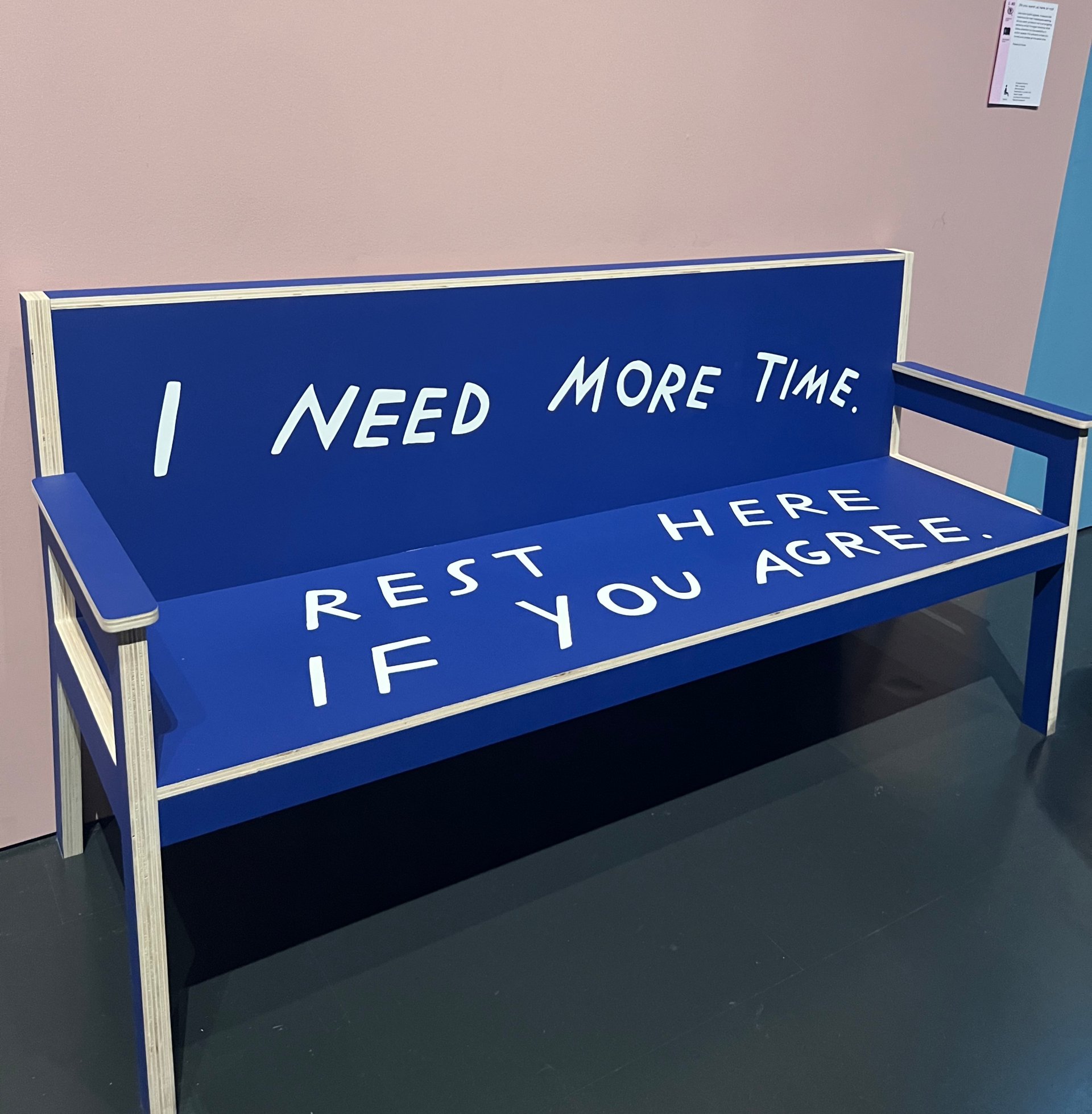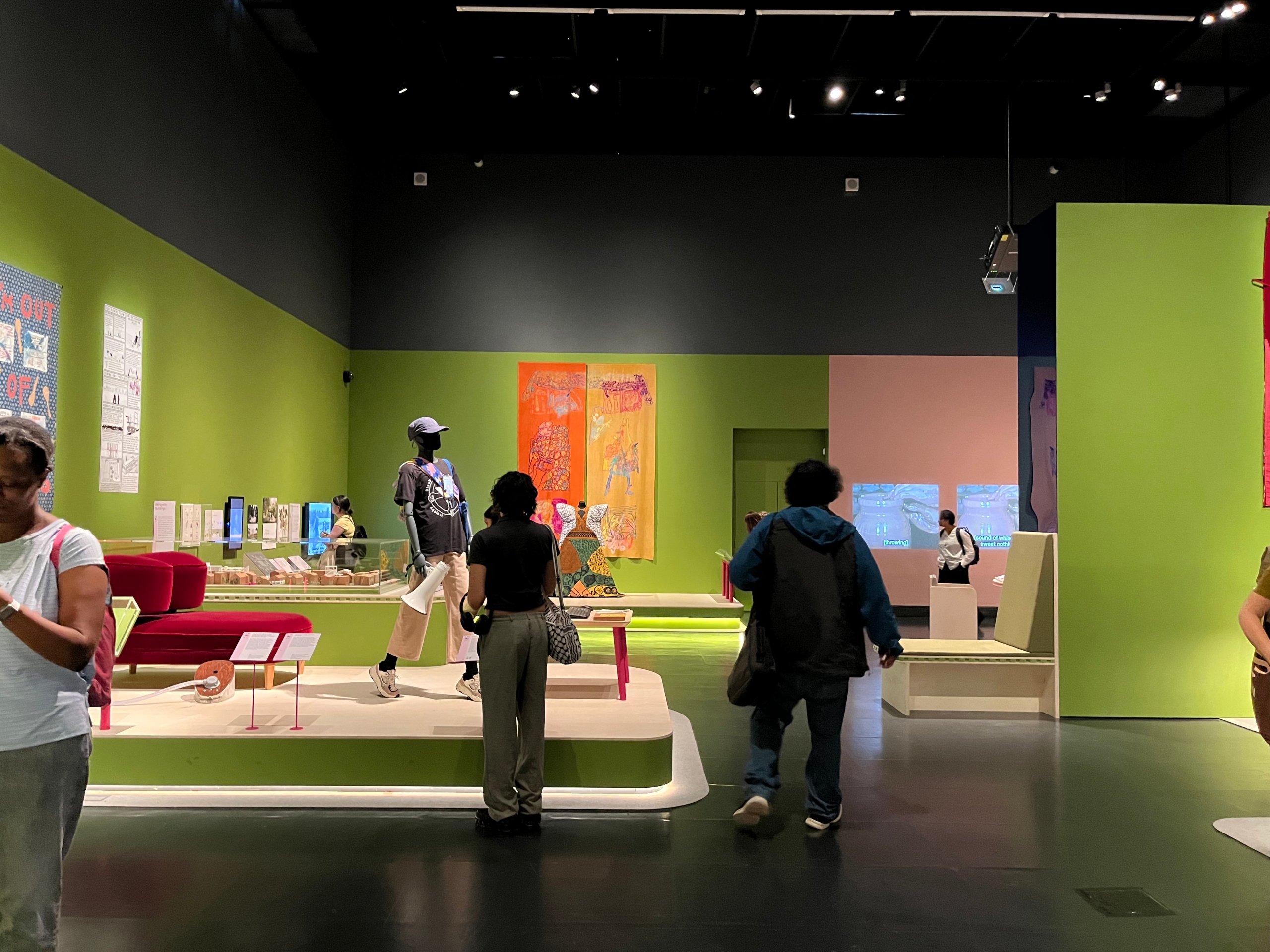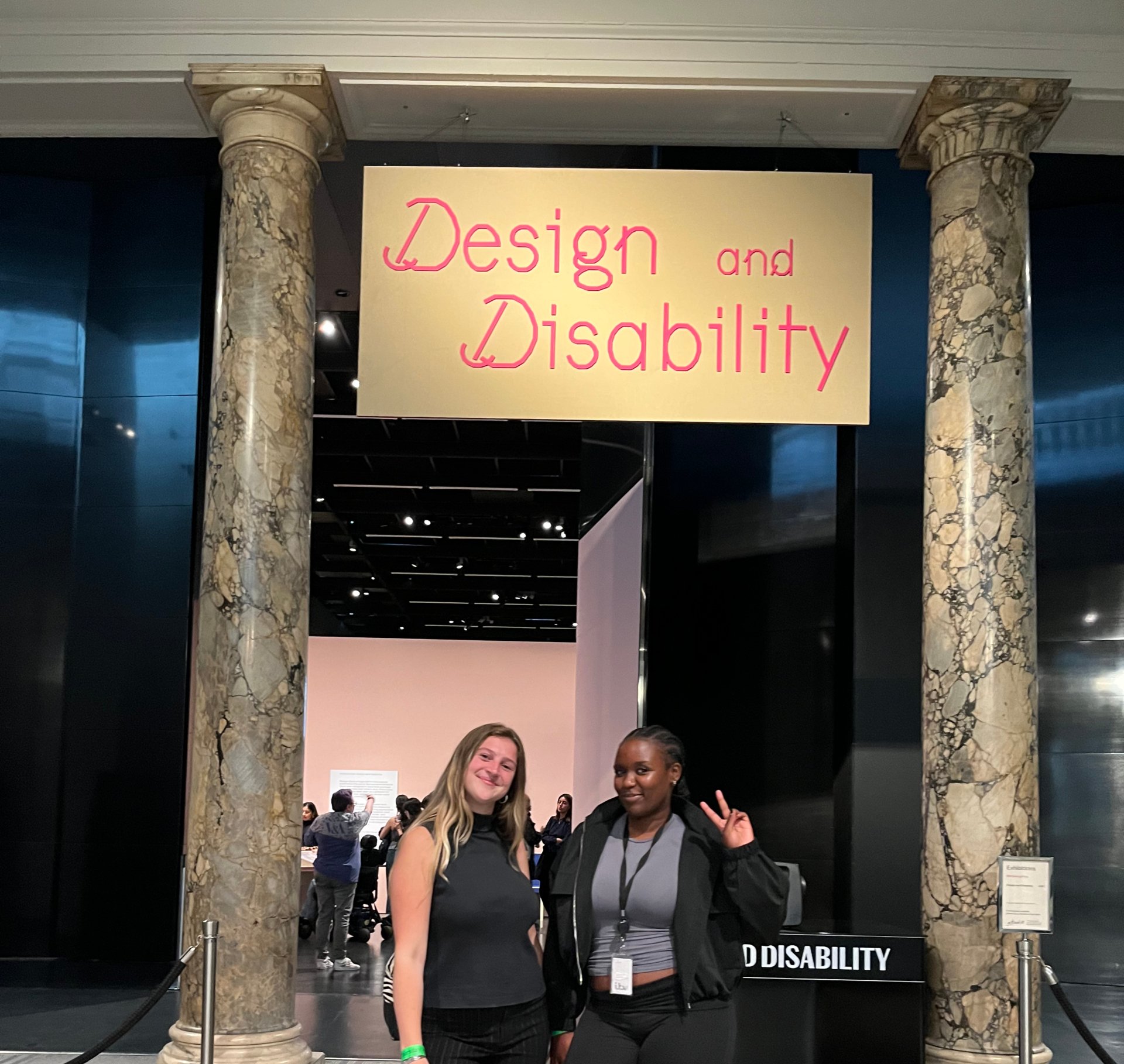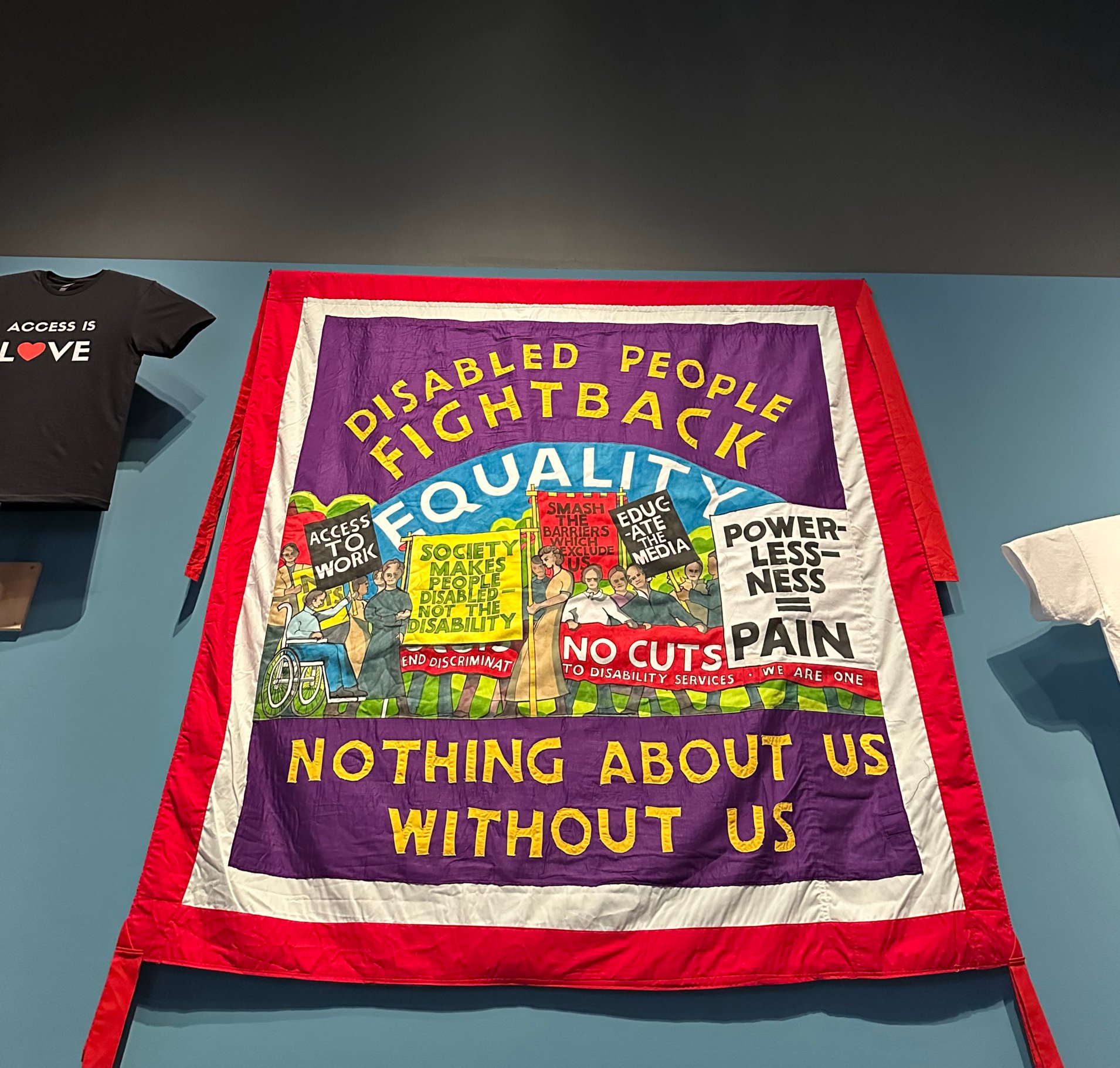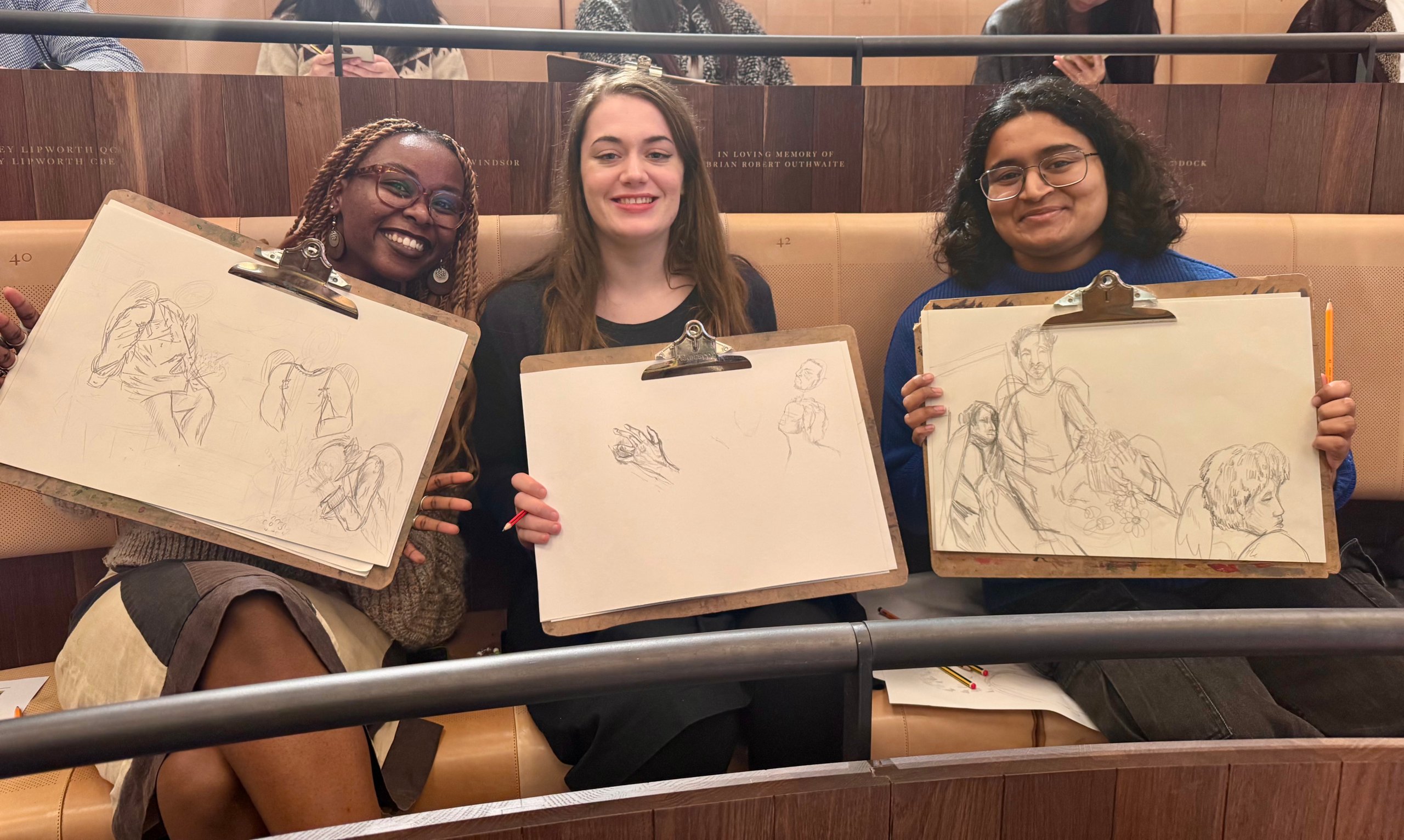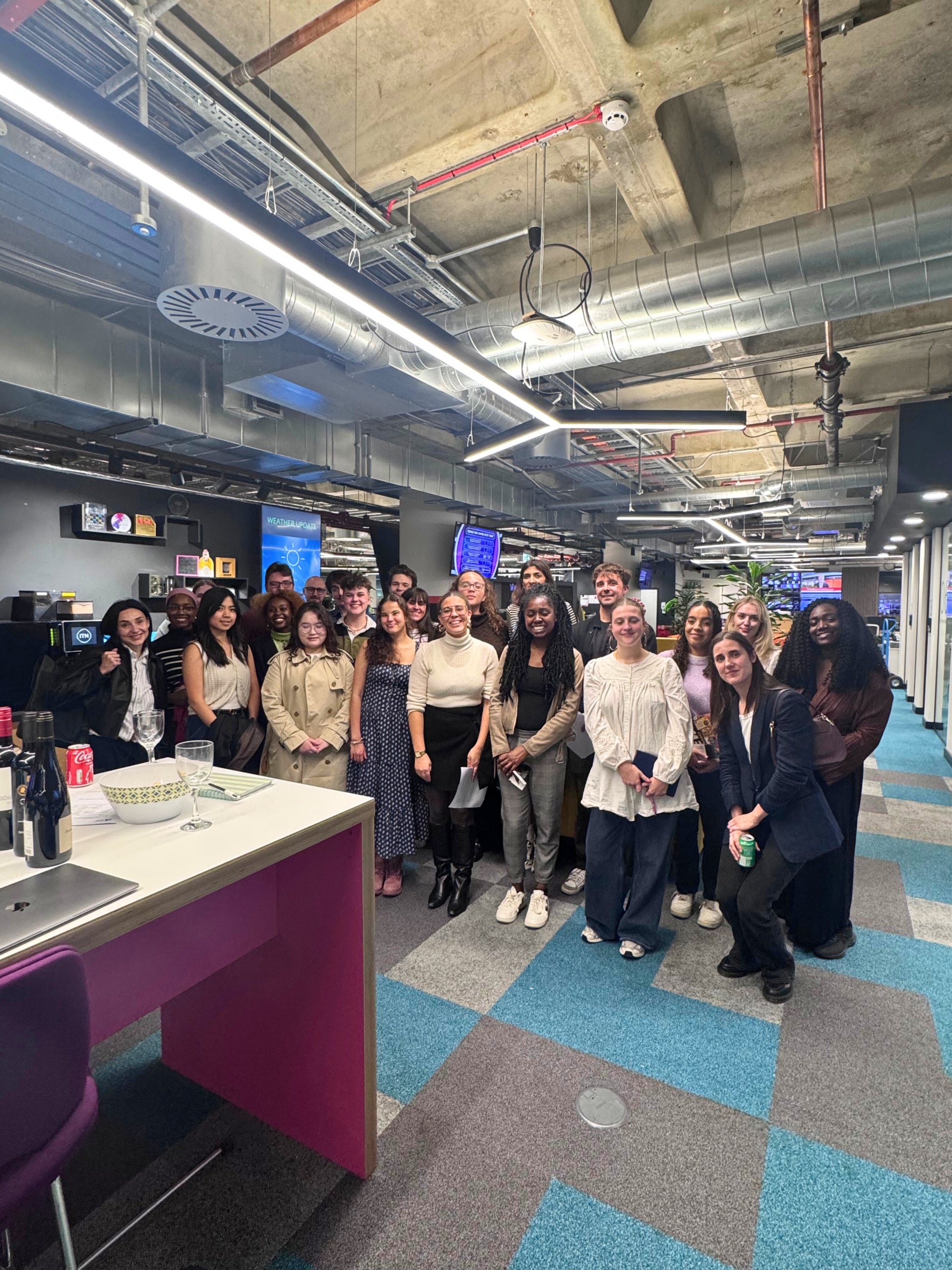Have you ever used a remote to change the volume on your TV? Watched a video with subtitles? Looked for a low point on a curb to move a suitcase between road and pavement? Listened to an audiobook while washing up?
You might not know it, but these are all examples of technologies designed with disabled people in mind that have since become part of everyday life, with an impact so profound that their invention can easily be overlooked or taken for granted.
The Victoria and Albert Museum’s Design and Disability exhibition, showing until February 2026, showcases the radical contributions of disabled, Deaf and neurodivergent people and communities – not just in meeting the access needs of daily life but in finding comfort, creativity, self-expression and sheer joy – all while breaking new ground as a more accessible gallery experience. The eclectic objects include high fashion, disability activist memorabilia, modded video game controllers, and the Squeeze Chair by Wendy Jacob (a luxurious chaise longue that calms its sitters with deep pressure stimulation).
For our August 2025 masterclass we were thrilled to hear Catriona Macdonald, exhibition manager at the V&A, delve into the work that goes into exhibitions like this one, followed by a private evening view of the exhibition itself.
The timeline for producing an exhibition like Design and Disability starts long before installation. In this case, work by curator Natalie Kane started at least five years ago and Catriona joined around two years into the process. There is a six-month period in which the feasibility of a show is researched and compiled, including extensive audience testing, culminating in the Business Case, a document Catriona neatly sums up as: “Here are our aims, and here is how we are going to achieve them.”
Catriona’s deep involvement in the exhibition, from initial feasibility planning through to the installation period, offers unique insight into the realities of exhibition-making at this level. In her role, Catriona is responsible for successfully delivering exhibitions in time and in budget, managing risks on both fronts whether at home at the V&A or for touring exhibitions. As you might imagine, the role involves communicating with an incredible variety of internal and external stakeholders, from specialist teams in the V&A to contractors and artists beyond.
After this has been successfully reviewed, a global view of the exhibition is created through a programme and schedule of work (a good old Excel spreadsheet does the trick) and there is the finalised budget, a risk register, curatorial presentations, a clear narrative scope to the exhibition with support from the Interpretation team, a brief for external or internal designers, all tenders that will be required… and, of course, a list of objects!
When the exhibition is in its development phase, the object list will be closed with loans and transport of the objects planned. At this point Conservation & Technical Services staff will come on board to figure out how exactly to display objects.
The installation process before the exhibition opens can be complex and items are often fragile. Some high value objects even come with their own couriers. In the case of Disability and Design was completed over two weeks, and Catriona worked closely with artists to understanding precisely how work should be displayed as intended, down to the precise positioning of a cushion on a piece of furniture.
The impression Catriona gives of managing the exhibition is one of an incredible balancing act. On one hand, placing accessibility as a central principle in how the exhibition is designed and how it can include disabled communities as much as possible – all while meeting the high curatorial standards of any V&A exhibition, and the complex technical and logistical requirements that make any of this possible.
But what exactly makes Design & Disability different? Accessibility is baked into the very core of the exhibition experience, with careful decisions made regarding layout, entrances, a dedicated onboarding area, audio and BSL guides, earcup headphones, induction loops, wall colours, tactile edges for doorways and furniture, a tactile map, and seating areas throughout the space.
Spaces are created for reflection and pause, including the blue bench with “I need more time // rest here if you agree” which Catriona describes as encapsulating the entire show and working as its manifesto. It’s common in galleries for there to be a lack of opportunity to simply rest and inhabit the space; that’s not the case here. Disability advisory groups were a crucial part in crafting an exhibition that puts disabled people and communities first.
The “lights up” day which takes place each month, in which lighting is increased to be inclusive of visitors who require this, is a perfect microcosm of the decision-making behind the exhibition. The higher light settings were designed with equal thoughtfulness to provide an intentional experience to every visitor rather than merely hitting a light switch, and the duration of the increased light was balanced with a need to protect certain objects from damage.
“Legacy is a particularly important thing for this show,” Catriona explains. While introducing audio description guides and plain English guides – both of which are the first of their kind in the museum – training was provided across the department so that other staff now have the skills to include these elements in their projects. The lighting gear acquired for the “lights up” days is now in the museum and can be used again. Catriona stressed that feedback from visitors that find these features beneficial is highly valued and helps shape and make the case for what should be included in future exhibitions.
Catriona also spoke candidly about the personal learning she gained through this process. Strong disabled representation in the team was even more valuable than expected, as working alongside mainly disabled practitioners created a shared context and basis of understanding that meant there was no contest over prioritising access. It was also a reminder to meet artists where they are and being ready to break convention to help individual working styles – for example, picking up the phone rather than sending a high volume of emails.
If non-disabled visitors leave the exhibition with one takeaway, Catriona wants them to become comfortable with feeling uncomfortable and to sit with this sensation for a while. “Disabled people should not be thought of as a monolith,” she tells us. “Every disabled person’s experience belongs to them.”
Thanks to our friends at the V&A for inviting the Creative Access community to a fantastic evening, and a huge thank you to everyone who attended the talk and private viewing! We look forward to seeing you at our next masterclass.
